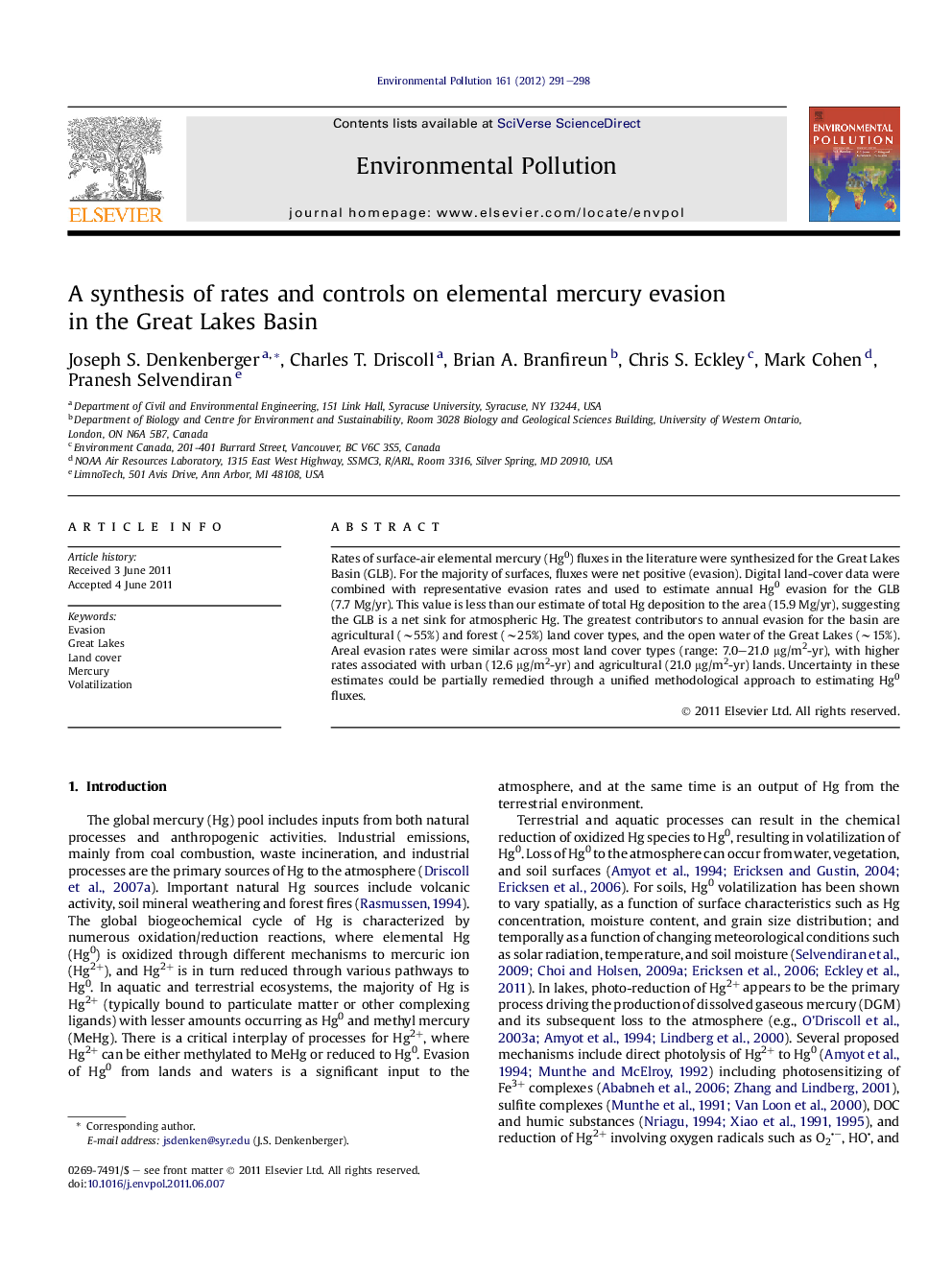| Article ID | Journal | Published Year | Pages | File Type |
|---|---|---|---|---|
| 4425132 | Environmental Pollution | 2012 | 8 Pages |
Rates of surface-air elemental mercury (Hg0) fluxes in the literature were synthesized for the Great Lakes Basin (GLB). For the majority of surfaces, fluxes were net positive (evasion). Digital land-cover data were combined with representative evasion rates and used to estimate annual Hg0 evasion for the GLB (7.7 Mg/yr). This value is less than our estimate of total Hg deposition to the area (15.9 Mg/yr), suggesting the GLB is a net sink for atmospheric Hg. The greatest contributors to annual evasion for the basin are agricultural (∼55%) and forest (∼25%) land cover types, and the open water of the Great Lakes (∼15%). Areal evasion rates were similar across most land cover types (range: 7.0–21.0 μg/m2-yr), with higher rates associated with urban (12.6 μg/m2-yr) and agricultural (21.0 μg/m2-yr) lands. Uncertainty in these estimates could be partially remedied through a unified methodological approach to estimating Hg0 fluxes.
► Considerable variability exists across spatial/temporal scales in Hg0 evasion rates. ► Methodological approaches vary for estimating and reporting gaseous Hg0 fluxes. ► Hg0 evasion from the Great Lakes Basin is estimated at 7.7 Mg/yr (10.2 μg/m2-yr). ► Hg flux estimates suggest region is a net sink for atmospheric Hg. ► 95% of Hg0 evasion in the region is from agriculture, forest, and the Great Lakes.
